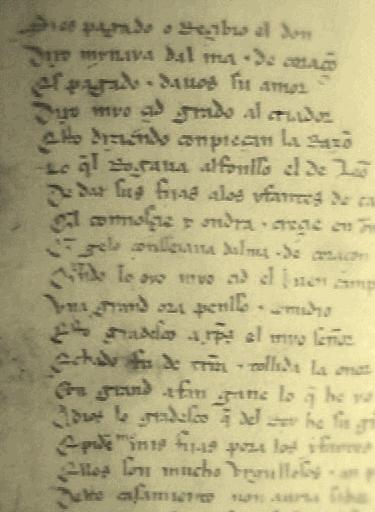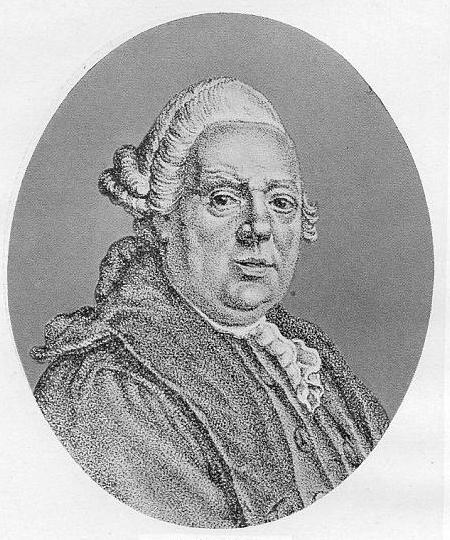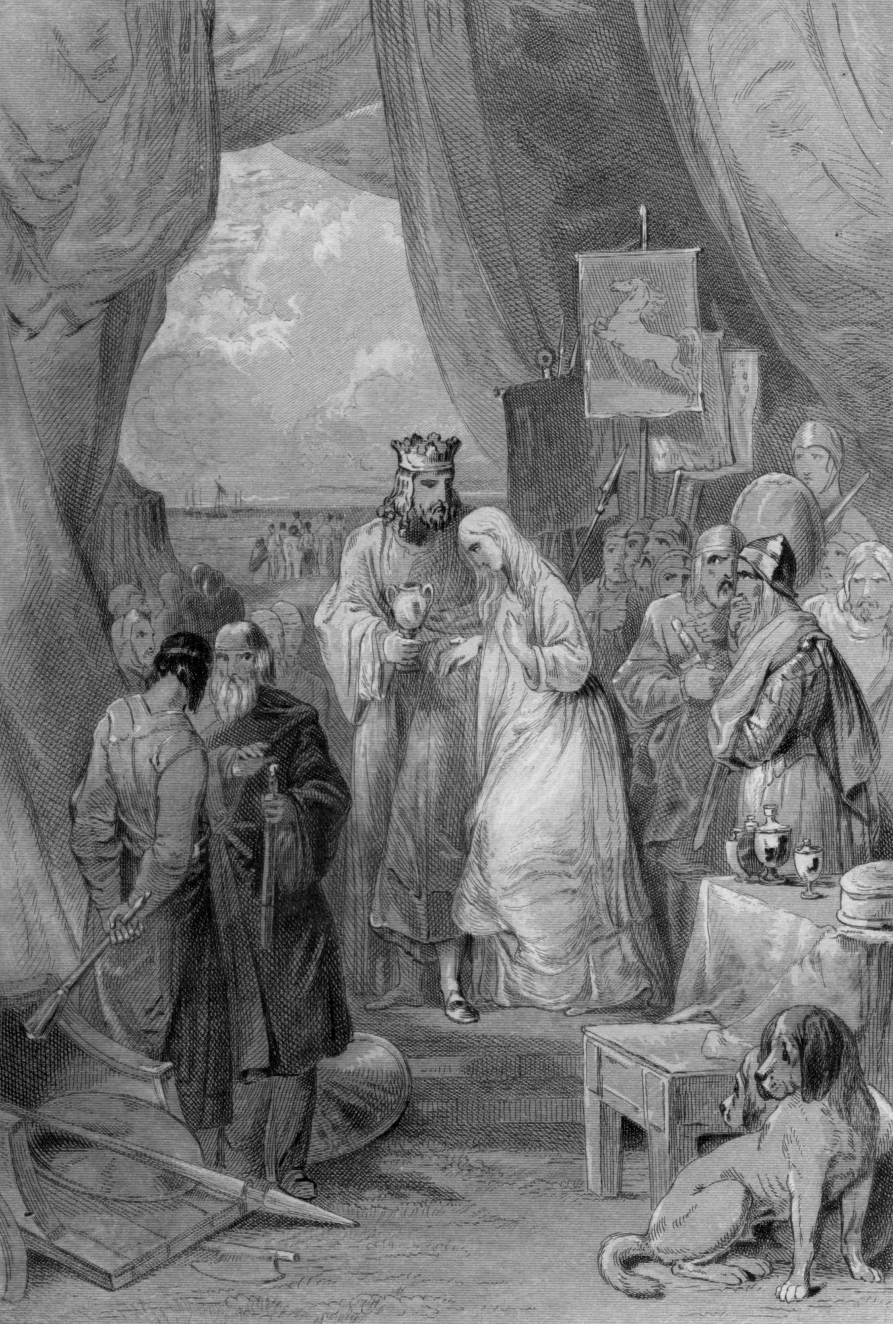|
Severa Verch Macsen
Sevira (a Vulgar Latin spelling of the Classical Latin name ''Severa'') was a purported daughter of the Roman Emperor Magnus Maximus and wife of Vortigern mentioned on the fragmentary, mid-ninth century C.E. Latin inscription of the Pillar of Eliseg near Valle Crucis Abbey, Denbighshire, Wales. The inscription was commissioned by Cyngen ap Cadell (died 855), king of Powys, in honour of his great-grandfather Elisedd ap Gwylog Elisedd ap Gwylog (died c. 755), also known as Elise, was king of Powys in eastern Wales, son of Gwylog ap Beli. Little has been preserved in the historical records about Elisedd, who was an ancestor of Brochwel Ysgithrog. He appears to have recl ..., who is here claimed to be a descendant of "Britu son of Vortigern, whom Germanus blessed, and whom Sevira bore to him, daughter of Maximus the king, who killed the king of the Romans." The Pillar of Eliseg inscription is the only known source for a daughter of Magnus Maximus named Sevira (or Severa). Furth ... [...More Info...] [...Related Items...] OR: [Wikipedia] [Google] [Baidu] |
Vulgar Latin
Vulgar Latin, also known as Popular or Colloquial Latin, is the range of non-formal Register (sociolinguistics), registers of Latin spoken from the Crisis of the Roman Republic, Late Roman Republic onward. Through time, Vulgar Latin would evolve into numerous Romance languages. Its Literary Latin, literary counterpart was a form of either Classical Latin or Late Latin, depending on the time period. Origin of the term During the Classical antiquity, Classical period, Roman authors referred to the informal, everyday variety of their own language as ''sermo plebeius'' or ''sermo vulgaris'', meaning "common speech". The modern usage of the term Vulgar Latin dates to the Renaissance, when Italians, Italian thinkers began to theorize that Italian language, their own language originated in a sort of "corrupted" Latin that they assumed formed an entity distinct from the literary Classical Latin, Classical variety, though opinions differed greatly on the nature of this "vulgar" dialect ... [...More Info...] [...Related Items...] OR: [Wikipedia] [Google] [Baidu] |
Classical Latin
Classical Latin is the form of Literary Latin recognized as a literary standard by writers of the late Roman Republic and early Roman Empire. It was used from 75 BC to the 3rd century AD, when it developed into Late Latin. In some later periods, it was regarded as good or proper Latin, with following versions viewed as debased, degenerate, or corrupted. The word ''Latin'' is now understood by default to mean "Classical Latin"; for example, modern Latin textbooks almost exclusively teach Classical Latin. Cicero and his contemporaries of the late republic referred to the Latin language, in contrast to other languages such as Greek, as or . They distinguished the common vernacular, however, as Vulgar Latin (''sermo vulgaris'' and ''sermo vulgi''), in contrast to the higher register that they called , sometimes translated as "Latinity". ''Latinitas'' was also called ("speech of the good families"), ''sermo urbanus'' ("speech of the city"), and in rare cases ''sermo nobilis'' ("nob ... [...More Info...] [...Related Items...] OR: [Wikipedia] [Google] [Baidu] |
Magnus Maximus
Magnus Maximus (; cy, Macsen Wledig ; died 8 August 388) was Roman emperor of the Western Roman Empire from 383 to 388. He usurped the throne from emperor Gratian in 383 through negotiation with emperor Theodosius I. He was made emperor in Britannia and Gaul the next year while Gratian's brother Valentinian II retained Italy, Pannonia, Hispania, and Africa. In 387, Maximus's ambitions led him to invade Italy, resulting in his defeat by Theodosius I at the Battle of Poetovio in 388. In the view of some historians, his death marked the end of direct imperial presence in Northern Gaul and Britain. Life Birth, army career Maximus was born in Gallaecia, on the estates of Count Theodosius (the Elder) of the Theodosian dynasty, to whom he claimed to be related.J. B. Bury ed. (1924)''The Cambridge Medieval History'' p. 238 Maximus was a distinguished general; he was probably a junior officer in Britain in 368, during the quelling of the Great Conspiracy. He served under Count Theodos ... [...More Info...] [...Related Items...] OR: [Wikipedia] [Google] [Baidu] |
Vortigern
Vortigern (; owl, Guorthigirn, ; cy, Gwrtheyrn; ang, Wyrtgeorn; Old Breton: ''Gurdiern'', ''Gurthiern''; gle, Foirtchern; la, Vortigernus, , , etc.), also spelled Vortiger, Vortigan, Voertigern and Vortigen, was a 5th-century warlord in Britain, known perhaps as a king of the Britons or at least connoted as such in the writings of Bede and Gildas. His existence is contested by scholars and information about him is obscure. He may have been the "superbus tyrannus" said to have invited Hengist and Horsa to aid him in fighting the Picts and the Scots, whereupon they revolted, killing his son in the process and forming the Kingdom of Kent. It is said that he took refuge in North Wales, and that his grave was in Dyfed or the Llŷn Peninsula. Gildas later denigrated Vortigern for his misjudgement and also blamed him for the loss of Britain. He is cited at the beginning of the genealogy of the early Kings of Powys. Medieval accounts Gildas The 6th-century cleric and historia ... [...More Info...] [...Related Items...] OR: [Wikipedia] [Google] [Baidu] |
Ninth Century
The 9th century was a period from 801 ( DCCCI) through 900 ( CM) in accordance with the Julian calendar. The Carolingian Renaissance and the Viking raids occurred within this period. In the Middle East, the House of Wisdom was founded in Abbasid Baghdad, attracting many scholars to the city. The field of algebra was founded by the Muslim polymath al-Khwarizmi. The most famous Islamic Scholar Ahmad ibn Hanbal was tortured and imprisoned by Abbasid official Ahmad ibn Abi Du'ad during the reign of Abbasid caliph al-Mu'tasim and caliph al-Wathiq. In Southeast Asia, the height of the Mataram Kingdom happened in this century, while Burma would see the establishment of the major kingdom of Pagan. Tang China started the century with the effective rule under Emperor Xianzong and ended the century with the Huang Chao rebellions. While the Maya experienced widespread political collapse in the central Maya region, resulting in internecine warfare, the abandonment of cities ... [...More Info...] [...Related Items...] OR: [Wikipedia] [Google] [Baidu] |
Latin Language
Latin (, or , ) is a classical language belonging to the Italic languages, Italic branch of the Indo-European languages. Latin was originally a dialect spoken in the lower Tiber area (then known as Latium) around present-day Rome, but through the power of the Roman Republic it became the dominant language in the Italy (geographical region), Italian region and subsequently throughout the Roman Empire. Even after the Fall of the Western Roman Empire, fall of Western Rome, Latin remained the common language of international communication, science, scholarship and academia in Europe until well into the 18th century, when other regional vernaculars (including its own descendants, the Romance languages) supplanted it in common academic and political usage, and it eventually became a dead language in the modern linguistic definition. Latin is a fusional language, highly inflected language, with three distinct grammatical gender, genders (masculine, feminine, and neuter), six or seven ... [...More Info...] [...Related Items...] OR: [Wikipedia] [Google] [Baidu] |
Pillar Of Eliseg
The Pillar of Eliseg – also known as Elise's Pillar or Croes Elisedd in Welsh – stands near Valle Crucis Abbey, Denbighshire, Wales rid reference It was erected by Cyngen ap Cadell (died 855), king of Powys in honour of his great-grandfather Elisedd ap Gwylog. The form ''Eliseg'' found on the pillar is assumed to be a mistake by the carver of the inscription. History Whilst the pillar itself dates to the 9th century, the large artificial mound is thought to be significantly older, possibly prehistoric. Certainly the mound can be dated to the Bronze Age. Inscription The Latin inscription consisted of some thirty-one lines of insular script. It not only mentioned several individuals described in the ''Historia Britonum'', but also complemented the information presented in that text. Considerable portions of the original inscription were read by the antiquarian Edward Lluyd in 1696 and his transcript seems to have been remarkably accurate according to Robert Vermaat of ''Vort ... [...More Info...] [...Related Items...] OR: [Wikipedia] [Google] [Baidu] |
Valle Crucis Abbey
Valle Crucis Abbey (Valley of the Cross) is a Cistercian abbey located in Llantysilio in Denbighshire, Wales. More formally ''the Abbey Church of the Blessed Virgin Mary, Valle Crucis'' it is known in Welsh both as ''Abaty Glyn Egwestl'' and ''Abaty Glyn y Groes''. The abbey was built in 1201 by Madog ap Gruffydd Maelor, Prince of Powys Fadog. Valle Crucis was dissolved in 1537 during the Dissolution of the Monasteries, and subsequently fell into serious disrepair. The building is now a ruin, though large parts of the original structure still survive. Valle Crucis Abbey is now under the care of Cadw. The abbey received 5,690 visitors in 2018. History Valle Crucis Abbey was founded in 1201 by Madog ap Gruffydd Maelor,Davies (2008), pg528. and was the last Cistercian monastery to be built in Wales. Founded in the principality of Powys Fadog, Valle Crucis was the spiritual centre of the region, while Dinas Bran was the political stronghold.Davies (2008), pg705. The abbey took its n ... [...More Info...] [...Related Items...] OR: [Wikipedia] [Google] [Baidu] |
Denbighshire
Denbighshire ( ; cy, Sir Ddinbych; ) is a county in the north-east of Wales. Its borders differ from the historic county of the same name. This part of Wales contains the country's oldest known evidence of habitation – Pontnewydd (Bontnewydd-Llanelwy) Palaeolithic site has Neanderthal remains of some 225,000 years ago. Castles include Denbigh, Rhuddlan, Rhyl, Prestatyn, Trefnant, Llangollen and Ruthin, Castell Dinas Bran, Bodelwyddan and St Asaph Cathedral. Denbighshire is bounded by coastline to the north and hills to the east, south and west. The River Clwyd follows a broad valley with little industry: crops appear in the Vale of Clwyd and cattle and sheep in the uplands. The coast attracts summer visitors; hikers frequent the Clwydian Range, part of the Clwydian Range and Dee Valley Area of Outstanding Natural Beauty. Llangollen International Musical Eisteddfod takes place each July. Formation The main area was formed on 1 April 1996 under the Local Government (Wale ... [...More Info...] [...Related Items...] OR: [Wikipedia] [Google] [Baidu] |
Cyngen Ap Cadell
Cyngen ap Cadell (English: Cyngen son of Cadell) or also (Concenn), was King of Powys from 808 until his death in 854 during a pilgrimage to Rome. Biography Cyngen was of the line of Brochwel Ysgithrog, and, after a long reign as king of Powys, he went on a pilgrimage to Rome and died there in 854. He is thought to be the first Welsh ruler to visit Rome after the healing of the breach between the Welsh branch of the Celtic Church and Rome over the date of Easter. Cyngen raised a pillar, originally a round-shafted cross, in memory of his great-grandfather Elisedd ap Gwylog which stands near the later abbey of Valle Crucis. This memorial had a lengthy inscription and is known as the Pillar of Eliseg owing to a typographical mistake by the original carver. Cyngen was the last of the original line of kings of Powys. He had three sons, but on his death Powys was annexed by Rhodri Mawr, ruler of Gwynedd. Certain later manuscript pedigrees (like Jesus College 20) claim that Rhodri was ... [...More Info...] [...Related Items...] OR: [Wikipedia] [Google] [Baidu] |
King Of Powys
Prior to the Conquest of Wales, completed in 1282, Wales consisted of a number of independent kingdoms, the most important being Gwynedd, Powys, Deheubarth (originally Ceredigion, Seisyllwg and Dyfed) and Morgannwg (Glywysing and Gwent). Boundary changes and the equal division of patrimony meant that few princes ever came close to ruling the whole of Wales. The names of those known to have ruled over one or more of the kingdoms are listed below. The only person known to have ruled all of Wales was Gruffydd ap Llywelyn (c. 1010–1063), a prince of Gwynedd who became King of Wales from 1055 to 1063. However, the princes of the medieval period hailing largely from west Wales, mainly Gwynedd, had such significant authority that allowed them to claim authority beyond the borders of their kingdoms. This allowed many Princes to claim to rule all Wales. Rhodri Mawr has been suggested by some as the first sovereign of Wales, and the first to unite most of Wales. The modern-day territory ... [...More Info...] [...Related Items...] OR: [Wikipedia] [Google] [Baidu] |


_A_king%2C_possibly_Magnus_Maximus%2C_holding_a_sceptre.jpg)




